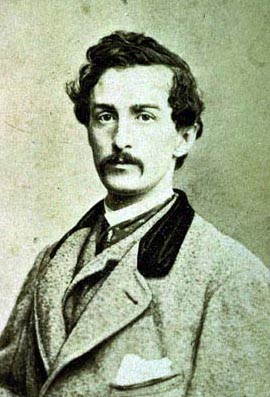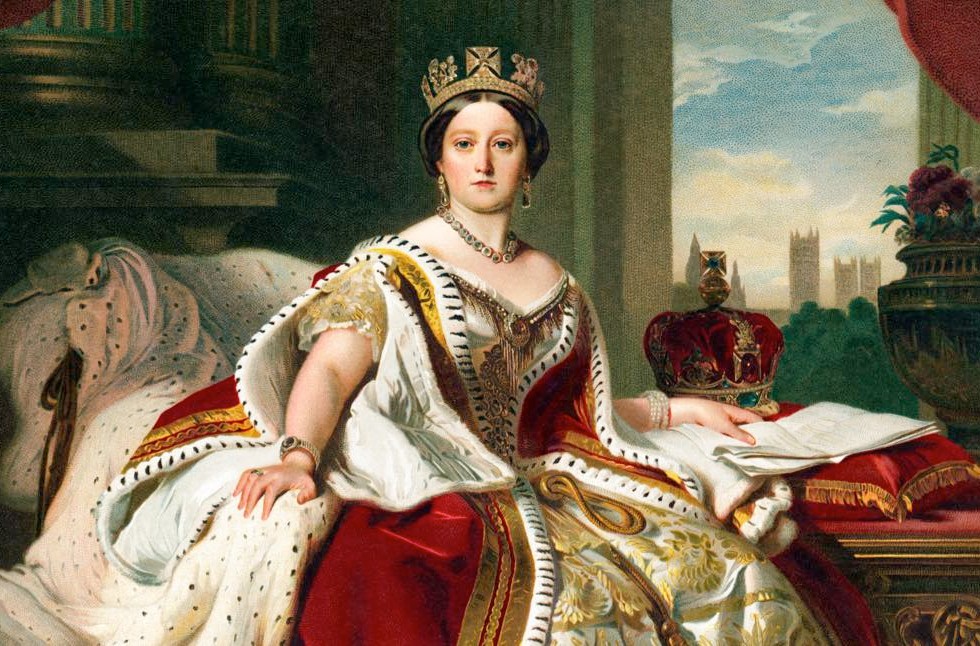
Boston Corbett (1832-?) photographed in 1865
The man who killed John Wilkes Booth was as mad as a hatter. His name was Boston Corbett. Actually, his name was not originally Boston Corbett, but Thomas T. Corbett. He became a reborn evangelical Christian while in Boston which he took as his new name. He began to wear his hair long like Jesus. He became a religious fanatic. Those who knew him said he was “different.” Boston Corbett was as mad as a hatter.
Boston Corbett was as mad as a hatter because he was a hatter – at a time when mercury was used in the felt hatmaking process. Hatmakers breathed the mercury vapors which caused mercury poisoning. Mercury damages the nervous system, producing symptoms such as drooling, twitching, paranoia, hallucinations, and agitation. It was probably mercury poisoning that caused the mental problems that dogged Corbett all his days.
![1115 john tenniel_thumb[2] "The Mad Hatter's Tea Party." ="Though he did not create the expression "mad as a hatter," author Lewis Carroll did create the eccentric character in his book, Alice in Wonderland (illustrations by Sir John Tenniel), first released in London in 1865, coincidentally, the year Lincoln was assassination. The hatter in the book is an eccentric fellow with wacky ideas and incoherent speech, attributes attributed to hatters of the day. Mercury was used in hatmaking and its poisonous vapors caused neurological damage on the hatters.](https://lisawallerrogers.files.wordpress.com/2009/06/1115-john-tenniel_thumb2.jpg?w=500)
"The Mad Hatter's Tea Party." Though he did not create the expression "mad as a hatter," author Lewis Carroll did create the eccentric character of the hatter in his book, Alice in Wonderland (illustrations by Sir John Tenniel), first released in London in 1865, coincidentally, the year Lincoln was assassinated. The hatter in the book is an eccentric fellow with wacky ideas and incoherent speech, characteristics attributed to many hatters of the day, suffering from mercury poisoning. Mercury was used in hatmaking and its poisonous vapors caused debilitating neurological damage to the hatters, resulting in a complete mental breakdown.
As I was saying, Corbett’s job – daily breathing in the noxious mercury fumes while he made felt hats – was making him go insane. By July 16, 1858, Corbett had become so insane that he picked up a pair of scissors, took off his pants, and castrated himself. After doing the strange deed, he nonchalantly dressed again and went out to a prayer meeting, where he ate heartily and then took a walk. Corbett did, however, end up seeing a doctor to receive treatment for his self-mutilation. (1)
At the outbreak of the Civil War, Corbett enlisted in the Union army. He reenlisted three times and was made sergeant. In the days following President Lincoln’s assassination, he was selected as one of the 26 soldiers in the 16th New York Cavalry commissioned to pursue and capture the fugitive assassin John Wilkes Booth. On April 26, 1865, Corbett and the others cornered Booth and his coconspirator David Herold in a tobacco barn on Richard Garrett’s Virginia farm. Herold gave himself up.

Lincoln assassin John Wilkes Booth
Booth refused to surrender, so the soldiers set the barn on fire, hoping to smoke him out. Corbett watched Booth through a large crack in the barn wall. As Booth moved about inside the burning barn, Corbett stuck his Colt revolver through the crack and aimed at the unsuspecting Booth, a full 12 feet away. Corbett’s bullet struck Lincoln’s killer in the neck, puncturing his spinal cord. Booth did not die at once.
When Corbett was questioned about his unilateral decision to kill rather than to capture Booth alive, he replied:
“God Almighty directed me.”
Back in Washington, Corbett was placed under technical arrest, but Secretary of War Edwin Stanton refused to prosecute the man many considered a hero. Stanton said, “The rebel is dead. The patriot lives.” Corbett collected $1653.85 in reward money.
Famous now, Corbett returned to the hat trade, first in Boston then in Connecticut and New Jersey. Further exposure to mercury caused his already volatile and erratic behavior to escalate. He got into frequent arguments which involved flashing his revolver in men’s faces.
He grew paranoid.
Then, in 1878, he made a radical life change. He moved to Kansas to live in a dugout; his home was nothing more than a hole in a hill with a stone front and a patchwork roof. He lived simply, sleeping on a homemade bed. He bought a flock of sheep. He began to give religious lectures that invariably turned into incoherent rants. He kept a number of firearms.
Improbably, in 1887, Corbett was appointed assistant doorkeeper to the Kansas House of Representatives in Topeka. Shortly after his appointment, he got crosswise with some men, pulled out a gun, threatened them, and got arrested. He was declared insane and sent to the Topeka Asylum for the Insane.
But he didn’t stay there. A little over a year later, he stole a horse that had been left at the asylum entrance and escaped. Little is known about where he went after that. Some say Mexico. He may have become a traveling salesman for a medicine company in Oklahoma Territory and Texas. No one knows what became of the man who killed John Wilkes Booth. That may forever remain a mystery.
(1) The actual hospital record can be read on page 59 of Lincoln and Kennedy: Medical & Ballistic Comparisons of their Assassinations by Dr. John K. Lattimer.



















You have a new link in my blog
http://chaquetamarilla.blogspot.com/2009/07/who-killed-abraham-lincoln.html
LikeLike
You have a cool blog. Thanks for the link. Come back soon.
LikeLike
Lisa,
Just wanted to comment that your article about Boston Corbett is one the very few factual reports I’ve read. It is well researched and presented without the typical misinformation associated with Sgt. Corbett. Good work.
LikeLike
DC, thanks for the compliments. I strive to be factual and entertaining at once; it’s nice to know that I succeeded on this post for you! Thanks for visiting Lisa’s History Room and please keep coming back.
LikeLike
this is a cool website i am asking around if any one knows history and i end up emty handed thank u alot for all of your help
LikeLike
Thanks! Please keep coming back.
LikeLike
Lisa, i am curious as to where you got your information regarding Sergeant Corbett, because personally i dont believe half of this. the army would not have let someone as crazy as you say he was serve. secondly most historical accounts say that he was in his right mind untill some time after he shot booth. infact the first indication that he was mad, or crazy was when he walked into a store and fired a pistol . he then spent the rest of his life in a mental hospital. no one knows when he died.
LikeLike
Although I have gathered my info on Boston Corbett from my many Lincoln books, the best one to recommend to you is awesome: Manhunt: The 12-Day Chase for Lincoln’s Killer by James L. Swanson. It has a companion photo history: Liincoln’s Assassins that is well-worth purchasing. For quicker info, go to the wiki entry on Boston Corbett: http://en.wikipedia.org/wiki/Boston_Corbett
The records of Massachusetts General Hospital chronicled Corbett’s self-castration before the Civil War, as is mentioned in detail in the Swanson book.
LikeLike
Boston Corbett most likely died in the Great Hinckley Fire. His name Thomas Corbett was listed among the dead or missing.
LikeLike
Interesting.
LikeLike
Hi Lisa,
Swanson uses “pistol,” and “revolver,” simultaneously in the same paragraph on page 334. They are significantly different weapons in both design and mechanically. Furthermore, there exists another claim that an Enfield rifle was used according to a late 1800’s New York Times article. This is doubtful since the Union Army after mid-1863 used mostly Spencers, Balls and other better alternatives. Does any record exist that confirms the type of weapon used by Corbett?
LikeLike
D., I hope you find an answer to your request. Anyone?
LikeLike
Cool info I liked it I needed info for a 1000 word essay and this site seemed to be the best in info. Thanks again.
LikeLike
This is my ancestor. The police actually murdured him after. This blog was changed.
LikeLike
Lisa, there is more history that’s been pulled up about Boston Corbett. He was living in Camden, NJ around the 1870’s and was a local preacher at a church located on Broadway St there. He also lived at least two addresses listed in that city found in archives in Camden County, NJ. After he left Camden , that’s where the story gets shady. Your one the few that has a fair amount of history/story on him.
LikeLike
He was such a character, Eugene!
LikeLike
Hey Lisa
Thank for the info he’s one of my about 3x great cousin
I’ve been really interested about this topic for a while thank yo
LikeLike